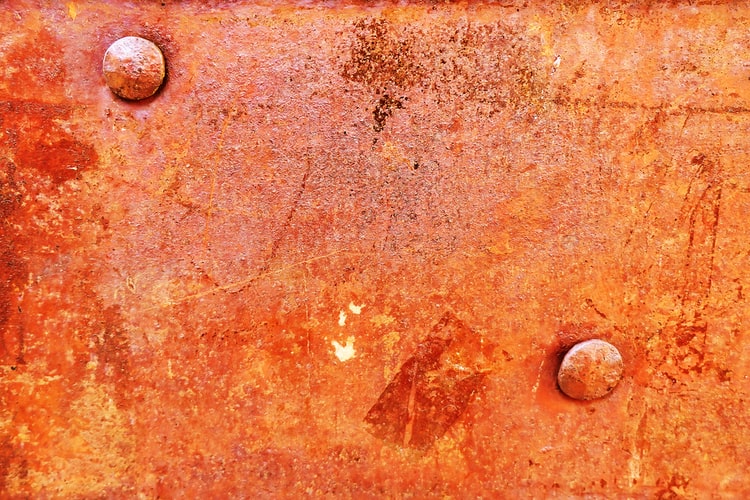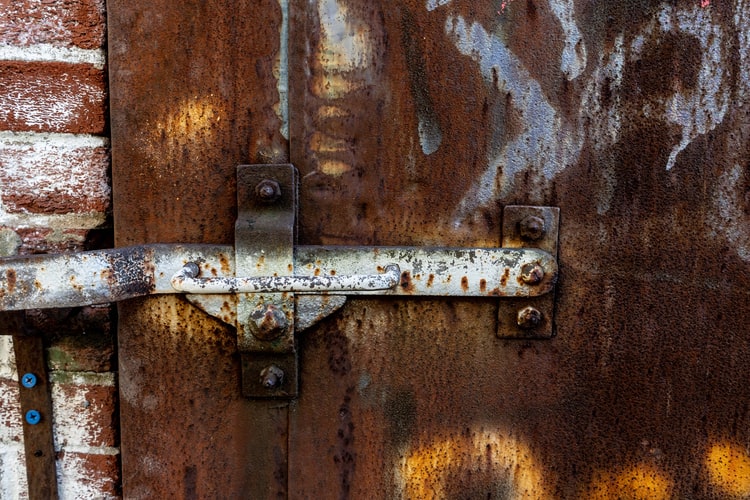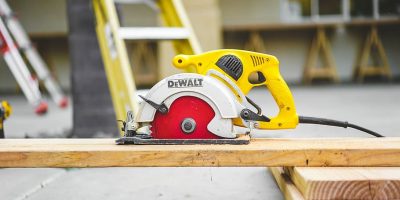Nuts and bolts are crucial to a lot of gadgets, pieces of machinery, and objects we use every day. Metal nuts and bolts degrade over time. Because rust form on these parts, the performance of these items is reduced. Rusts are also an eyesore, so it is crucial to remove them and have them replaced. How to remove a rusted bolt with no head? Most DIYers with basic skills can tackle this challenge. Patience is crucial as you extract the wedged bolts. Don’t get your hackles up, or it will only make the experience worse. Do not apply force to something that doesn’t require force. If you break a bolt, you will have to spend hours drilling it out. In any project, examine the situation and make a strategy and use tips and tricks.
How to remove a rusted bolt with no head- 11 steps

Is the bolt broken?
The first thing you should examine is if the bolt is about to break. Once the bolt loosens, its breaking point is near. As an example, studs are notorious for corroding the thin shanks and are easily broken.
Examine if the bolt is rusted or if it has a locking compound. Bolts from manufacturers have thread locker applied to them. This coating can be softened with heat.
Decide if the bolt is worth saving. Rusted fasteners that have reduced tensile strength won’t deliver the clamping force necessary to do its task. It is not worth saving a dead fastener. It is a better choice just to break the bolt completely and get it replaced. Fasteners such as body bolts and screws can be saved most of the time. Apply locking pliers on the J-nut so they won’t twist and destroy the bolt.
Remove the rust
If you think the bolt can still be saved, remove the threads’ rust as much as possible. Applying a stiff wire brush and a little effort will go a long way towards good results.
Remove as Much Rust as Possible
It is crucial to remove as much rust from the thread through all the way to the end of the nuts, so it doesn’t gall and seize as it twists.
Choose the proper tool
Select the proper tool. Open-ended wrenches will likely round off the flats of a nut that is stuck. A box with six points is superior to a 12.4 for similar reasons. Since the nuts have become smaller because of corrosion you may obtain a better fit using the next smaller size. As an example, a ½ inch socket may be a better replacement on rusted 13 mm nuts. It is crucial to cut the nuts off exhaust fasteners using an abrasive wheel attached to a die grinder.
Turn it in the correct direction
How to remove a rusted bolt with no head? Determine if you are turning the bolts in the right direction. A lot of mechanics still get their spatial directions wrong even when there is a mnemonic for this. They especially get confused when they work on the reverse and upside-down positions. Many threads are left hand loosened, but some ring gear bolts and old 60s style lug nuts should be turned backward.
Liquid Thread Looseners
A liquid thread loosener can be applied to unstuck rusted nuts and bolts. There are tons of brands to choose from, but, in a lot of cases, using penetrating oil can minimize the force needed to overcome the rust bond by half and even more. You can mix homebrew of 50% acetone and 50% ATF. However, it would help if you protected yourself from the fumes they give off.
Soaking the threads
Soak threads liberally with penetrating oil. Whichever brand you use, it is crucial to repeat applications and possibly steep it overnight. Always remember that patience is vital since it can save you time drilling out damaged bolts.
Attaining better leverage
There is greater leverage with a breaker bar or long-handled ratchet. Use a firm even force as you pay close attention to the feel of each turn. If the stress suddenly turns soft or rubbery, you are either destroying the bolts or stripping off the threads. Wear protective mechanic gloves to minimize sore knuckles.
Heat is effective
How to remove a rusted bolt with no head? If the nut is attached to the bolts, you will need a better strategy. The use of heat, when carefully applied to one part of the nut, can sufficiently be expanded enough to break the rust bond and melt the locking compound. Make sure to clean off all the penetrating oil and only use the open flame in safe areas.
Most modern vehicles extensively use plastic, which can melt and catch fire if you are not careful. Since human vision can be narrow when behind tinted safety glasses, use a spotter to watch telltale signs of smoke or flames. Using fireproof welder’s blankets is crucial for the protection of vital parts and accidents from fire.
A lot of experts will utilize a tiny amount of oxyacetylene tip to focus heat in tight areas. However, budget hardware bought propane torch is sufficient if you have the space for it.
Paraffin as a Lubricant
How to remove a rusted bolt with no head? One method used by experts when removing rusted pipe plugs from cast iron is to apply heat on the iron then melting a candle over the threads. Paraffin will cover the threads and act as a lube. Make sure to apply a snug-fitting and properly sized socket.
Last Resort
How to remove a rusted bolt with no head? A pneumatic or electric impact gun is your last resort because it often destroys the bolts. Use the proper impact socket and wear protective gloves and glasses. Because these tools can be high-powered, use them only for larger nuts. If possible, use the impact gun on the area where the nut is wedged and hold the bolts using a wrench.
How to remove a rusted bolt with no head–3 quick steps to Remove a Rusted Screw or Bolt

Rust Remover spray
How to remove a rusted bolt with no head? If the rust is merely on the surface, you should apply a rust remover on the screw and bolt. When rust forms, it will bind with the fastener up to the interior threading in which it is wedged. You can twist and pull out the rusted screw, but you will likely fail to remove it if you do not unbind it. There are rust remover products on the market which are designed to target the bond created by rust. Just spray on the rust remover on the head of the screw and bolts but make sure that the product steeps into the threading. After steeping the screw and bolts for 10 minutes, you can attempt to disengage it.
Use a Hammer
How to remove a rusted bolt with no head? In many cases, removing rusted screws and bolts will only require the forceful strike of a hammer. As mentioned previously, rusted screws and bolts are a challenge to remove because they form bonds to the interior threading where they are wedged. How to remove a rusted bolt with no head? Another way to unbind a rusted fastener is to apply force with a hammer. Using an eye protection shield, strike the head of the fastener with a hammer forcefully. As you strike, attempt to remove the fastener using a screwdriver.
Covering the Head with Duct Tape
How to remove a rusted bolt with no head? If you cannot loosen the screw and bolts because of the rusted heads, consider covering it with duct tape. When the head of the fastener is rusted, it can stop a screwdriver from gripping it. You might be able to insert the screwdriver into the head, but it will not move the fastener when you turn. How to remove a rusted bolt with no head? A straightforward solution is to cover the screw’s head with duct tape. If there is an extensive rust formation, you may need to put several layers of duct tape. You can then insert the screwdriver into it once you have covered the head with duct tape. You can turn and remove the fastener once the screwdriver has gripped the duct tape.
Preventative Maintenance– how to remove a rusted bolt with no head

To avoid getting the bolts getting stuck in the first place, there are several things you can do.
- Use proper force and avoid overtightening the bolts
- Apply a high-quality thread lube to the bolts or stud to prevent seizing by galvanic corrosion
- Simply applying a coat of spray paint over the fastener heads will keep rust from forming. Paint also prevents moisture and locks it out of the threads.
- Use a wire brush on the fastener head.
- If it is impossible to paint the heads, an option would be to regularly spray them down with penetrating oil and put a small dollop of grease. It is also smart to apply the same method with the bolt’s threads if they are visible behind the bracket.
Rust – How to Remove it and Prevent it
How to remove a rusted bolt with no head? Rust the results when iron oxygen and moisture mix. It is a pervasive chemical process that targets homes, automobiles, workshops, and every other area where metal is present. Failing to respond to this problem can turn it into a grave emergency. It is unsightly and can cause objects to malfunction. If neglected, rust will encourage the complete destruction of the iron parts it attacks. Rust is the reason behind many structural failures over time. There have been many cases of gaping holes on objects such as old automobiles and metal roofing. There is no doubt that rust is destructive.
Some products remove rust effectively. Clean as much of the rust as possible and apply a wire brush to larger areas and thick layers of rust. Spread a rust remover on the problem area and let it steep for up to 10 minutes and then wash it off. Use a popsicle stick when applying the rust remover. Similar to other rust removal techniques, this is not ideal for painted surfaces.
In some areas, rust can be removed by applying some extra fine steel wool and WD-40’s spirit. This method not only removes rust but will leave a nice gleam on the metal. Apply the method for knives of all kinds as well as tools coated with chrome. Make sure to use extra-fine steel wool. Once again, this technique for rust removal is not suitable for painted areas.
Metal paint
How to remove a rusted bolt with no head? Apply a high-quality metal paint to stop rust permanently. Rust preventing metal paints on the market are easy to apply and can last for the long-term. In some cases, there are even paints available that do not require removing the rust before painting the problem area. These paints have a formulation that prevents existing rust from expanding. This reaction prevents future rust from forming. This can be a very useful feature in cases where rust developed and are impossible to de-rust sufficiently.
Using clear rust preventing paints is also an ideal solution to a lot of rust problems.
Oil and silicones
How to remove a rusted bolt with no head? Oils and silicones will stop rust for the short term and can be applied to prevent the chemical process from happening by locking out air. Since rust forms when it combines with oxygen, moisture, and iron, removing only one of the three will get you zero rust. Applying oils and silicones will lock the air and water from getting near the iron, halting the process. However, this is only a temporary fix since the oil and silicone will dissolve over time.
If you apply oil or silicon to reduce and prevent rust formation and later opt for painting the area, make sure to utilize a good cleaner to make sure that the oil or silicon remnants have been removed before you begin painting. There must be zero oil or silicon on the metal surface when you start painting it.
How to remove a rusted bolt with no head Final thoughts
As time passes, rust will form on metal parts, and that includes your bolts and screws. Since these objects are present in nearly every human-made machine, gadgets, and convenience, it can be a real problem when they get rusted. In many instances, once these bolts have eroded, they have to be replaced. How to remove a rusted bolt with no head? Apply the proper tools, tips, and tricks to have a hassle-free experience when removing rusted bolts.


